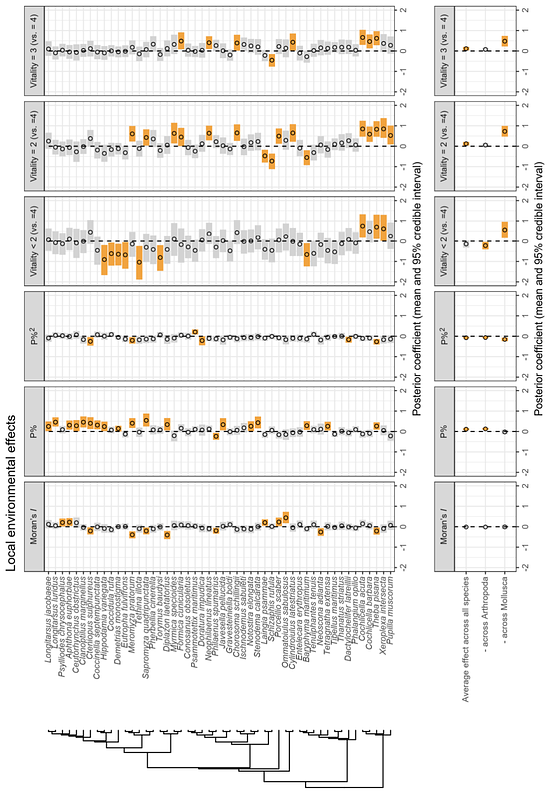Drivers of plant-associated invertebrate community structure in West-European coastal dunes

Drivers of plant-associated invertebrate community structure in West-European coastal dunes
Van De Walle, R.; Dahirel, M.; Langeraert, W.; Benoit, D.; Vantieghem, P.; Vandegehuchte, M.; Massol, F.; Bonte, D.
AbstractThe organisation of species diversity is affected by environmental factors acting at different spatial scales. To understand the drivers behind the community structure of invertebrates associated with Marram grass -the dominant dune building ecological engineers from coastal dunes-, we setup a stratified sampling scheme into six biogeographic regions along the North Sea. By sampling plant tussocks that are differently spatially organised, we tested to which degree local species composition is affected by the plant spatial organisation. We used a joint species distribution approach to understand how species traits and their phylogeny steer the species community composition. We show biogeography to be the most important driver, followed by species-specific responses to marram grass cover and vitality. Traits or phylogeny had a minor impact on the species distribution patterns. The residual species covariation suggests negative interactions between groups of specialist and generalist species. From an applied perspective, our research indicates that the biological value of Nature-based Solutions that build on the restoration and design of coastal dunes can be steered by the design of a heterogeneous marram grass planting scheme and/or development.


